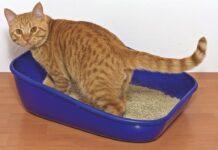Q I just purchased a lovely Persian kitten, and the breeder told me to make sure my veterinarian tests to see what my kittens blood type is. Ive had cats all my life, and I never knew they had different blood types. Is this something new?
Among pedigreed cats, the proportion with type A blood is mostly dependent on the breed. For example, 100 percent of Siamese cats have type A blood, but the percentage falls to about 40 percent in British shorthairs; the remainder is either type B or AB. The other breeds tend to fall somewhere between these extremes. Your Persian kitten has about a 25 percent chance of having type B blood.
When a blood transfusion is needed
Its safest to give type A blood to a type A cat and type B blood to a type B cat. But what if the donors blood type doesnt match that of the recipient? Well, it depends. If type B blood were given to a type A cat (that had never received type B blood in the past), usually only a mild transfusion reaction would ensue – so mild that it might not even be noticeable over the short term. But if a type B cat were to receive type A blood, an extremely rapid, severe and potentially fatal reaction would occur, even if just a few milliliters of blood were given.
Veterinarians dont usually emphasize blood typing for non-pedigreed cats – theyre almost all type A. Most donor cats arent pedigreed either, so it would be highly likely for both donor and recipient to have the same type A blood. But many pedigreed cats have type B blood, so it is extremely important that people caring for these lovely creatures know the blood type before a transfusion is given. Determining your cats type is a simple procedure requiring only a few drops of blood in most cases – and it could be a real lifesaver should your cat ever need “the gift of life.”
———-
Q
Last week my cat had yellow, semi-formed stool that got smeared into the long fur on his back end. This just happened for one day and he seemed to feel fine. Hes passing normal stool now, but what was the reason for the bright yellow color? Does it mean there is something wrong with him?A
The dark brown color of normal cat stool largely results from substances in the bile, a liquid produced in the liver that then empties into the first part of the small intestine. Bile aids in the digestion of fats and contains a number of substances, among which are breakdown products of aged red blood cells. These breakdown products impart the yellow color that is characteristic of bile. As these yellow pigments pass in stool on the way out of the body, bacteria residing in the large intestine break them down further, so their original yellow color is changed to a dark brown.Several other things influence the color of normal stool, including the diet. Some manufacturers add food colorings to cat food to try to make it appear more appetizing (a ploy aimed at the humans purchasing the products; kitties couldnt care less!). And cat foods con
taining mostly meat proteins tend to produce darker stools than diets primarily utilizing other protein sources. Some medications can induce color changes, too. The color of the medicine itself may tint the stool, but some antibacterial medications temporarily reduce the number of bacteria in the large intestine, leading to lighter-colored feces.
Loose stool, regardless of the cause, is often yellow, green or light brown in color, because it moves so quickly through the large intestine that the resident bacteria simply dont have time to complete the color change. The yellow color doesnt really indicate whether the cause of the diarrhea is a simple or a serious disorder.
When might a color change alert you to contact your veterinarian? Here are a few instances:
u
Chalk-colored or light gray feces. Not commonly seen in cats, but stool of this color may indicate an obstruction of the bile-draining tubes in or near the liver. (No bile, no color)u
Dark black (“tarry”) feces. This usually signifies bleeding into the stomach or small intestine. As the stool passes out of the body, bacteria in the large intestine change the color of the blood from red to black.u
Bright red or blood-streaked feces (sometimes accompanied by mucus) usually indicates a problem in the large intestine, rectum, or anus. The blood stays red because the large intestinal bacteria dont have time to change its color.Needless to say, you should be alert to more than just the color of your cats stool. Prolonged diarrhea, straining to defecate, painful defecation, or absence of defecation all require veterinary attention.
v


